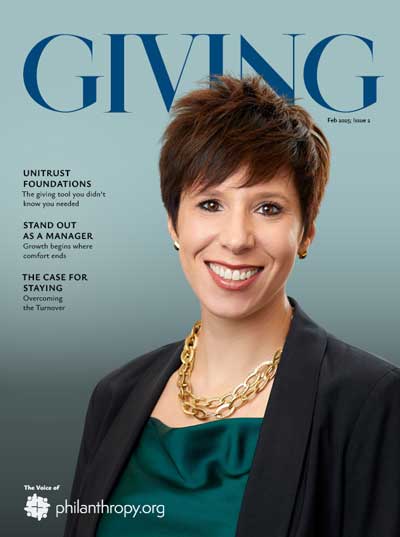Designating beneficiaries for your non-probate assets is a crucial step in ensuring that your estate is transferred smoothly and efficiently to your loved ones or chosen organizations. By understanding the process and following the necessary steps, you can avoid the lengthy and costly probate process. This comprehensive guide will walk you through everything you need to know about designating beneficiaries for non-probate assets.
Understanding Non-Probate Assets
Non-probate assets are those that can bypass the probate process and transfer directly to beneficiaries upon your death. These assets include:
- 401(k) and IRA accounts
- Life insurance policy payouts
- Certain bank and brokerage accounts
By designating beneficiaries for these assets, you ensure a quicker and smoother transfer to your loved ones without the need for court intervention.
Importance of Beneficiary Designations
Designating beneficiaries is crucial for several reasons:
- It avoids the probate process, which can be time-consuming and costly.
- It ensures that your assets go to the intended recipients.
- It provides clarity and reduces potential disputes among heirs.
Without a designated beneficiary, your assets may default to your estate, causing delays and additional legal fees.
Who Can Be a Beneficiary?
You have the flexibility to choose who will be your beneficiary. Common beneficiaries include:
- Family members like your spouse, domestic partner, children, parents, or grandchildren
- Friends and romantic partners
- Nonprofits or charities
It’s important to consider tax implications and legal restrictions, especially when naming minors as beneficiaries.
Steps to Set Up Beneficiary Designations
List Your Non-Probate Assets and Their Corresponding Institutions
Start by creating a comprehensive list of your non-probate assets, including account numbers and the institutions holding these assets. This organization will help your loved ones manage these assets after you’re gone.
Contact Each Institution
Reach out to each institution to set up or update your beneficiaries. Follow their specific processes, which may include filling out forms, using online portals, or calling customer service.
Update Your Tracking Document
Keep a record of your beneficiary designations and store this document with your other important papers. This ensures that your loved ones can easily access and manage these assets after your death.
Keeping Beneficiary Designations Updated
Life changes such as marriage, divorce, or the birth of a child can affect your beneficiary preferences. Regularly review and update your designations to ensure they reflect your current wishes. Experts recommend reviewing your estate planning documents every three to five years or after major life events.
Do You Still Need a Will?
Even with designated beneficiaries, having a will is essential. A will covers assets that will go through probate and allows you to specify how you want your remaining assets managed. It also lets you name a guardian for your minor children.
Common Mistakes to Avoid
Avoid these common mistakes when designating beneficiaries:
- Not updating designations after major life events
- Failing to name contingent beneficiaries
- Ignoring tax implications for non-relatives
- Relying on default beneficiaries without reviewing them
Beneficiary Designation Forms
Each institution will have specific forms for designating beneficiaries. Ensure you fill out these forms accurately and submit them according to the institution’s guidelines. Always confirm that the designations have been recorded.
Primary vs. Contingent Beneficiaries
Primary beneficiaries are first in line to receive the asset. Contingent beneficiaries inherit the asset if the primary beneficiary cannot or does not want to accept it. Naming contingent beneficiaries provides a backup plan and ensures your assets are distributed according to your wishes.
Legal Considerations
Consult with an estate attorney to navigate complex legal considerations, such as:
- State-specific inheritance laws
- Tax implications for beneficiaries
- Legal restrictions on naming minors as beneficiaries
An attorney can provide personalized advice and help you create a comprehensive estate plan.
Beneficiary Designations for Retirement Accounts
For 401(k) and IRA accounts, ensure you name both primary and contingent beneficiaries. Retirement accounts have specific tax implications, so it’s important to consider how these assets will be taxed upon transfer.
Beneficiary Designations for Life Insurance Policies
Life insurance policies typically require a beneficiary designation form. Ensure your designations are up-to-date and reflect your current wishes. Review these designations periodically, especially after major life changes.
Beneficiary Designations for Bank Accounts
Many banks offer payable-on-death (POD) accounts, which allow you to name a beneficiary. These accounts transfer directly to the beneficiary upon your death, bypassing probate.
Beneficiary Designations for Brokerage Accounts
Similar to bank accounts, brokerage accounts can have transfer-on-death (TOD) designations. These designations ensure that your investments transfer directly to your beneficiaries without going through probate.
Designating Minors as Beneficiaries
Naming minors as beneficiaries requires special considerations. Options include:
- Name the Child’s Legal Guardian: Designate a legal guardian in your will. This guardian will manage the assets until the child reaches adulthood.
- Appoint a Custodian: A custodian manages the financial assets for a minor until they come of age. This option provides flexibility and ensures the assets are managed responsibly.
- Establish a Trust: Set up a trust and name a trustee to manage the assets. The trust can hold the inheritance until your child reaches a specified age, and the trustee will manage the assets according to your instructions.
Reviewing and Revising Beneficiary Designations
Regularly reviewing and revising your beneficiary designations ensures that your assets are distributed according to your wishes. Life changes such as marriage, divorce, or the birth of a child can affect your preferences, so it’s important to keep your designations current.
Working with an Estate Attorney
An estate attorney can provide valuable guidance throughout the process of designating beneficiaries. They can help you navigate legal complexities, ensure your designations are compliant with state laws, and create a comprehensive estate plan that reflects your wishes.
FAQs
What happens if I don’t designate a beneficiary?
Without a designated beneficiary, your assets may default to your estate and go through probate, causing delays and additional legal fees.
Can I change my beneficiary designations?
Yes, you can change your beneficiary designations at any time. It’s important to review and update them regularly to reflect your current wishes.
Are there tax implications for beneficiaries?
Yes, there can be tax implications for beneficiaries, especially for non-relatives. Consult with an estate attorney or tax advisor to understand the specific implications.
Can I designate multiple beneficiaries for one asset?
Yes, you can designate multiple beneficiaries and specify the percentage each should receive. This ensures that your assets are distributed according to your wishes.
What is the difference between primary and contingent beneficiaries?
Primary beneficiaries are first in line to receive the asset. Contingent beneficiaries inherit the asset if the primary beneficiary cannot or does not want to accept it.
How often should I review my beneficiary designations?
Experts recommend reviewing your designations every three to five years or after major life events, such as marriage, divorce, or the birth of a child.
Designating beneficiaries for your non-probate assets is a crucial step in ensuring that your estate is transferred smoothly and efficiently to your loved ones or chosen organizations. By following the steps outlined in this guide and keeping your designations updated, you can avoid the lengthy and costly probate process and provide peace of mind for yourself and your loved ones.



